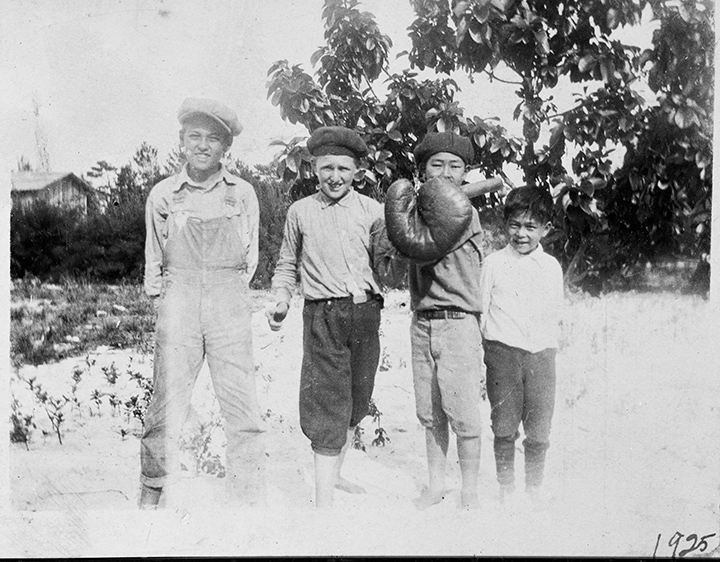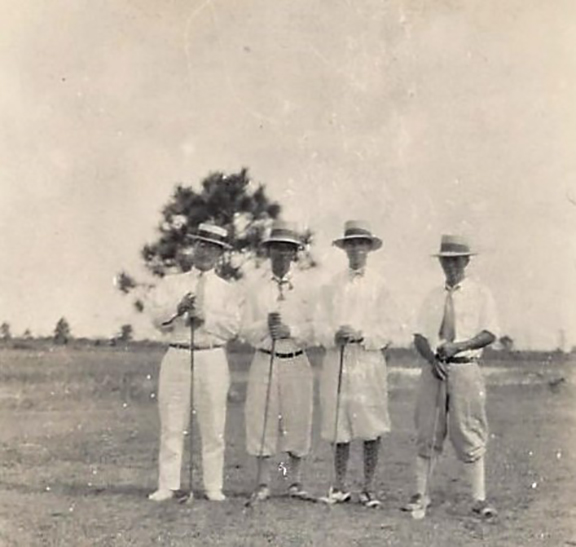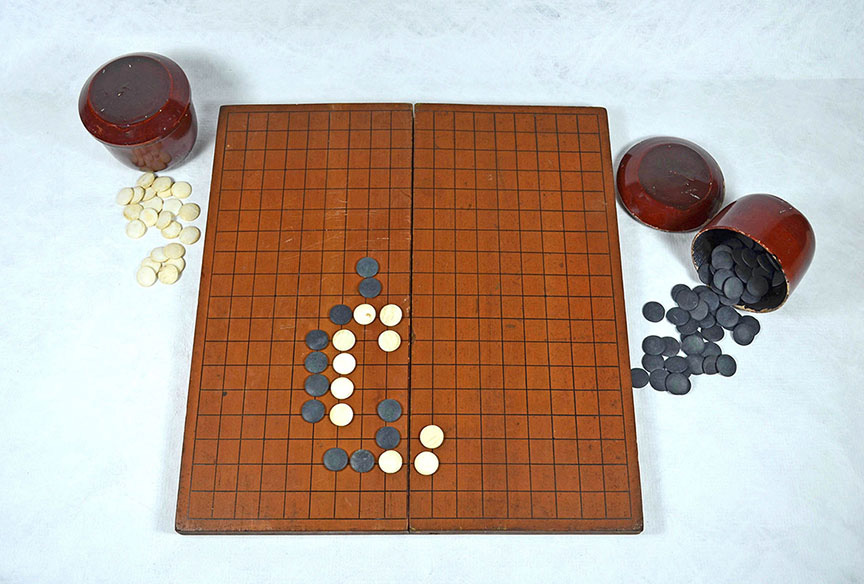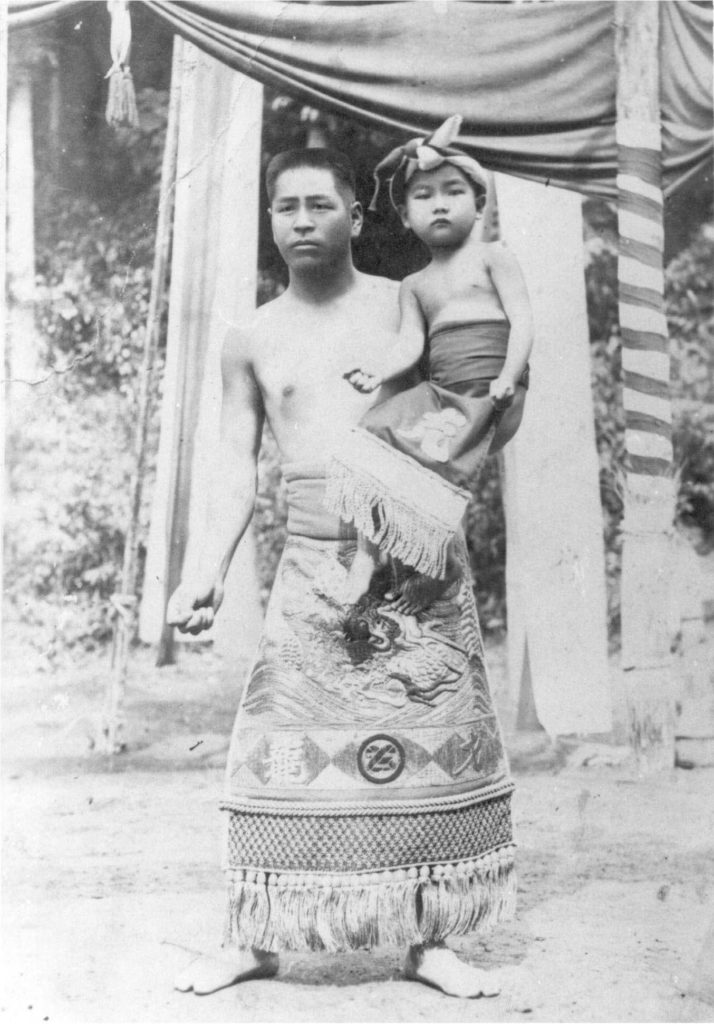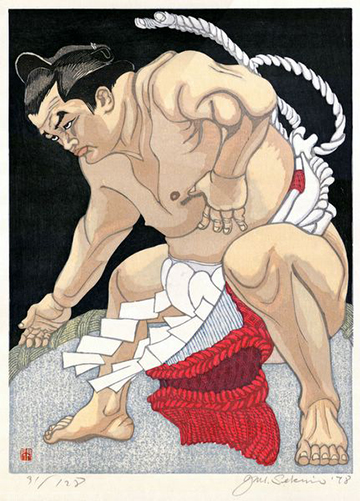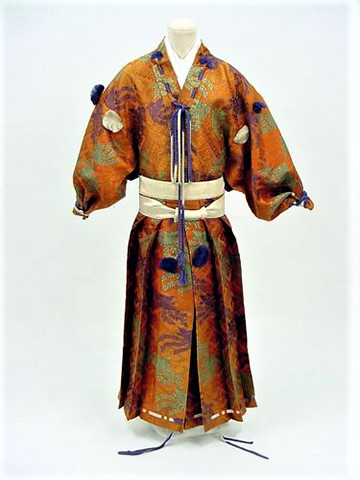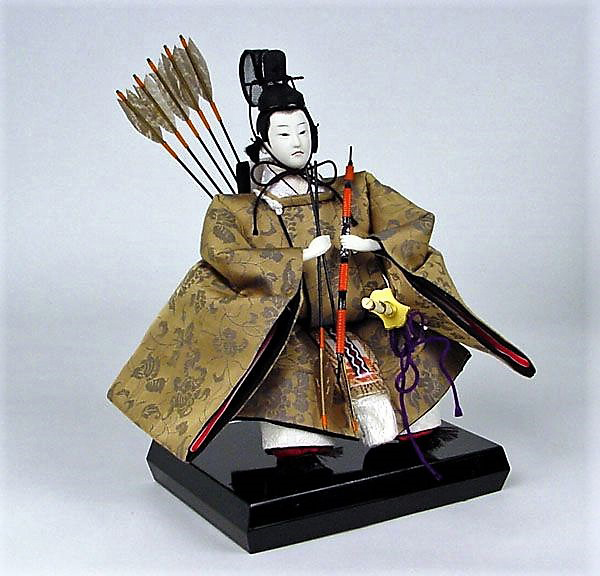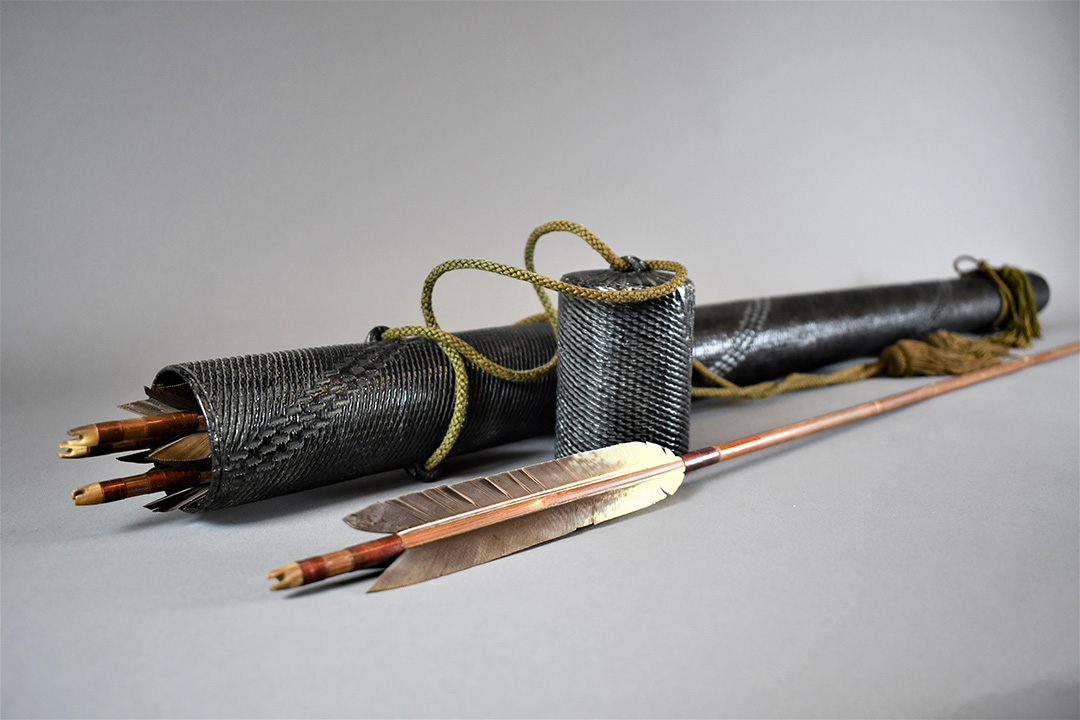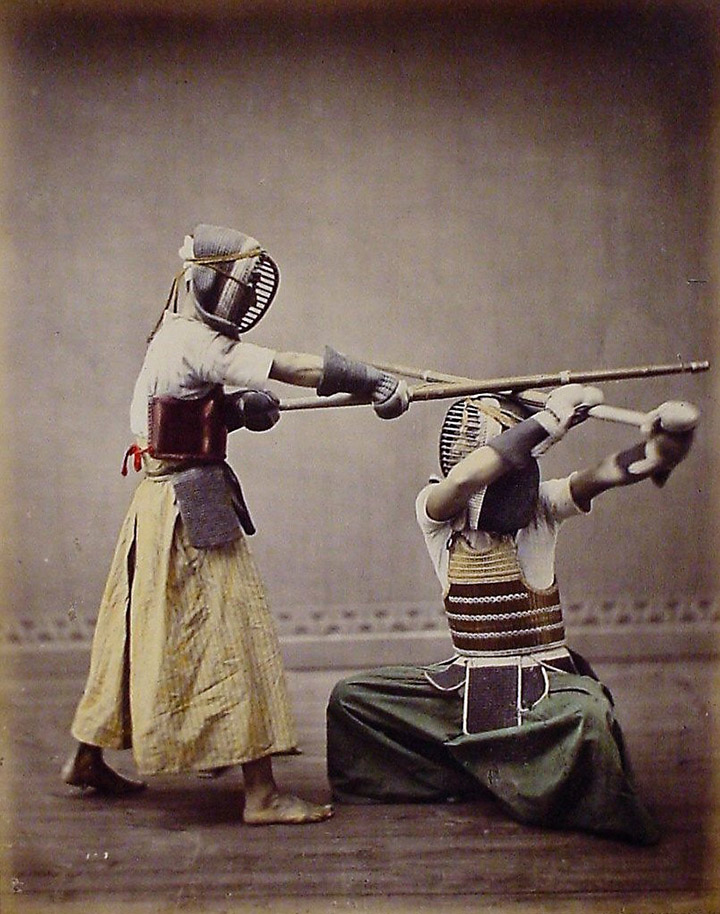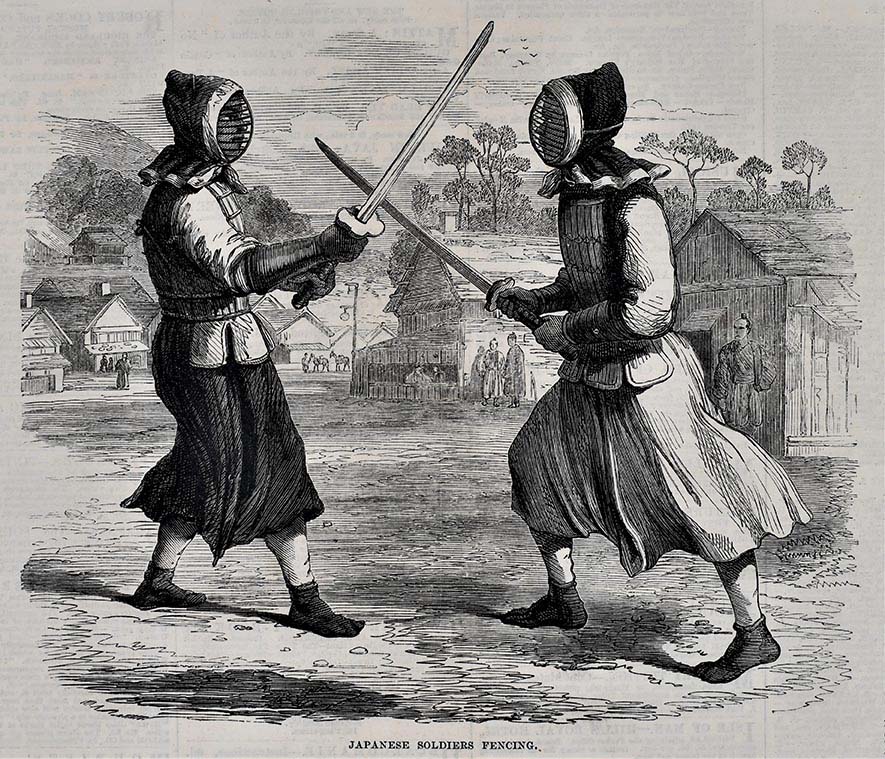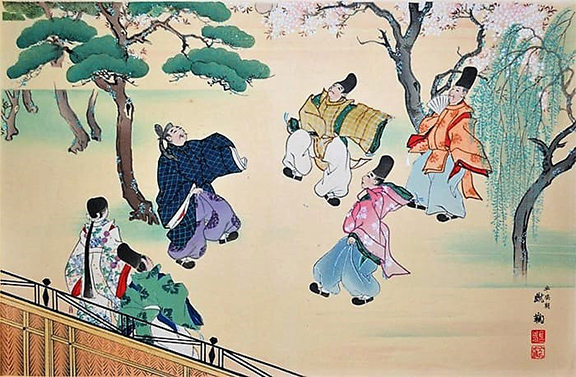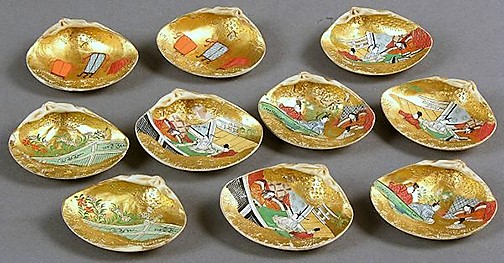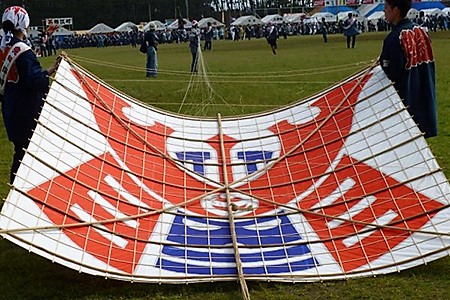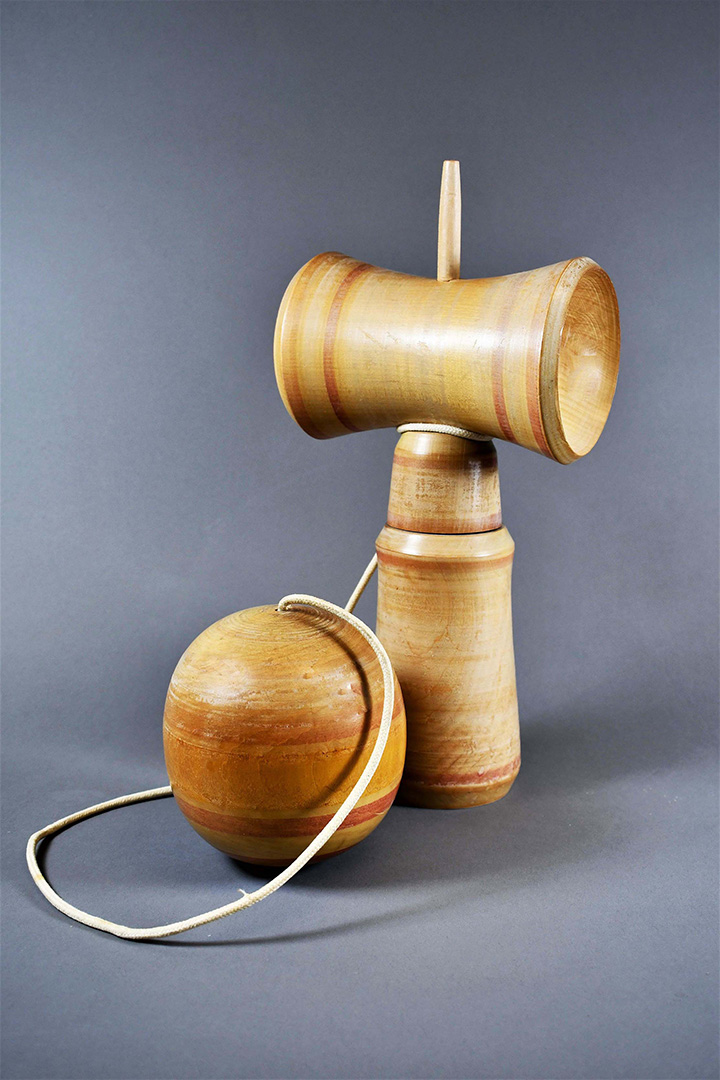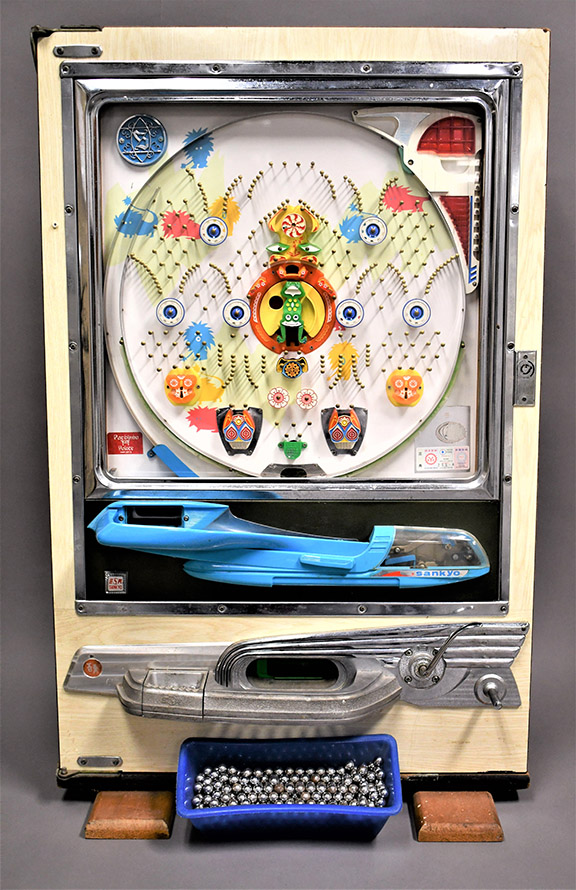Let the Games Begin!
Traditional Sports and Games of Japan
The cross-cultural influence of sports and games is found around the world. We can see evidence of this in the photo archives of the Yamato Colonists who settled in Delray Beach, Florida. Naturally, they embraced sports and pastimes that were popular in America during the early 20th century – such as baseball and golf. They also brought and shared some Japanese games and activities, like the card game hanafuda and the board game go.
Vernon Richardson, Walter Smith, Frank & Kazuo Kamiya with baseball gear,
1925, digital image,
Gift of Masuko Kamiya Suga on behalf of the descendants of Henry & Yetsu Kamiya,
1989.007.017a-b
George Yoshida, Henry Kamiya, Harry Fukushima, and Don Oishi playing golf,
ca. 1920s, digital image,
Gift of Masuko Kamiya Suga on behalf of the descendants of Henry and Yetsu Kamiya,
1989.007.024a-b
Oscar Kobayashi’s go game,
ca. 1907-1915, wood and stones,
16.25” h x 16.25” w,
2002.010.003a-g
Sumo
One of the sports unique to Japan is sumo. Sumo is closely associated with the indigenous Shintō religion, as the first bout took place during the Yayoi period at the order of Emperor Suinin (who reportedly reigned for 99 years from 29 B.C.E. to 70 C.E.). A former samurai codified the modern-day rules in 1684. Many of the prescribed movements that the sumo wrestlers engage in before fighting, such as stamping their feet and throwing salt, stem from religious rituals. Sumo bouts are win/loose (no ties) based on pushing or pulling the opponent out of the ring, or forcing them to the mat. There is, however, a point system to determine annual rankings. The uniforms worn by referees are similar to the robes worn by Shintō priests. Referees are highly respected by both participants and fans for their decorum and judgement.
Ida Motoharu as a young boy held by a sumo player,
Meiji period (1868-1912),
digital image,
Courtesy of Ida Motoharu,
1986.007.003
Wajima Hiroshi (1948-2018),
by Sekino Junichiro (1914-1988),
woodblock print: ink and pigments on paper;
11” h x 15” w,
Gift of Mr. & Mrs. Michael Marcus,
1995.018.105
Sumo referee (gyōji) uniform,
ca. 1925-1975,
Shōwa period,
embroidered silk,
67” h x 57” w,
Gift of Col. C.A. & Betty Fleming and Keith Ingermann,
2001.020.004a-b
Archery
In Japan, as in many other countries, the horse symbolizes power and wealth as well as a crucial component to success on the battlefield. By the 7th century, mounted archery, called yabusame, had become a necessary marital arts skill – especially in the days before the sword was the weapon of choice for samurai warriors. By the Heian period (794-1185), yabusame competitions were included in formal court ceremonies to honor ancestors and request protection for the community from the gods. After the 16th century – when guns were introduced from the West – archery faded as a combat skill, but continues as an aesthetic practice to refine both the body and mind. No longer on horseback, the marital art of kyūdō, or the way of the bow, came to be widely practiced. After WWII, high schools revived it as an extracurricular activity more closely related to archery in the West. However, in Japan the focus remains on self-improvement over scoring and awards.
Doll with bow and quiver,
ca. 1980-1984, Shōwa period,
wood, pigmented gofun, silk, paper, leather, and metal,
8.5” h x 9” w,
Gift of Japan Pavilion, 1984 Louisiana World Exposition,
1984.007.111a-n
Quiver and arrows,
lacquer, twisted paper, silk, bamboo, and feather,
37.75” h x 1.25” w,
Gift of Col. and Mrs. Donald B. Gordon,
1981.013.003a-e
Kendo
Similarly, another traditional martial art that developed into a modern sport is kendō. During the Shōtoku era (1711-1716), Naganuma Shirozaemon-Kunisato (1688-1767) developed new and more graceful techniques of wielding the sword created from actual battle skills, and shaped the foundation of formal routines, or kata. Later, protective gear and the bamboo-sword (shinai) were established as basic equipment. The playing area is a 33-foot square. Because you can circle your opponent in kendō (unlike Western fencing) there can be a lot of physical contact. In addition, kendō practitioners are allowed to strike a player when they are down.
Two kendō practitioners,
by Kusakabe Kimbei (1841-1934),
ca. 1871-1912, Meiji period,
hand-colored albumen print,
.5” h x 7.5” w,
Gift of Mr. and Mrs. Robert Berger,
1983.005.097
Two officers practicing kendō,
Aug. 6, 1864, Edo period,
newspaper engraving: ink on paper,
8” h x 10” w,
Museum Purchase,
2000.004.005
Kemari
Many traditional Japanese sports and games date back to the classical Heian period (794-1185). One example is the Japanese version of hacky-sack, or kemari. It was a pastime for the elite and commoners alike at the Heian court with anywhere from two to 12 people divided into two teams who try to keep the hide-covered ball in the air as long as possible. The typical court has a dirt floor and one tree at each corner: ideally a cherry, maple, willow, and pine. The contemporary Kemari Preservation Society maintains the courtly traditions associated with the game.
Hacky-sack (kemari) players,
ca. 1950-1959, Shōwa period,
woodblock print: ink and pigments on paper,
11” h x 16.25” w,
Gift of Paulina C. Cayia,
2003.002.023
Kaiwase
Another favorite Heian pastime was the shell-matching game, or kaiawase, which came into full development by the 12th century. In the early years of the game, one would accumulate a set of shells with scenes painted on them and play with one to four people, usually kneeling on a mat or next to a low table. By the end of the 12th century, the full game set consisted of 360 illustrated clamshells. The matching lacquer boxes for carrying the pieces became more elaborate over the years, too.
Shell-matching game (kaiawase),
19th c., Edo period,
pigments and gold leaf on shell,
3.35” w x 2.5” d,
Museum Purchase,
1989.020.047a-b
Kites
Other games and contests invented in the Heian period began to thrive later in the Edo period (1603-1868), such as kite battles. One of the most famous kite events is the Hamamatsu Kite Festival. It dates back to 1558 as a celebration in honor of the local lord’s first born son. It is held annually May 3-5 in the city of Hamamatsu, and features a contest on the beach where teams from over 100 different towns try to bring down the other kites. These massive kites can be more than 11 feet wide and take several people to launch and control them. A smaller version of these fighting kites in the Morikami Museum Collection bears the symbol for the town Kitamachi.
Town insignia kite (machijirushi-dako),
ca. 1980s, Shōwa period,
ink and colors on paper, bamboo and string,
27.5” h x 15.75” w,
Museum purchase,
1988.011.112
Kitamachi town kite at the Hamamatsu Kite Festival,
digital image,
image source: https://en.japantravel.com/shizuoka/hamamatsu-kite-flying-festival/1947
Kendama
Another popular game that flourished in the Edo period is the Japanese version of a cup-and-ball game called, kendama. Legend states that French sailors brought ‘bilboquet’ to Japan in the 1700s as a drinking game. The Japanese added two side cups of different size to make it more challenging and today there are formal competitions held world-wide. Don’t miss the Kendama World Cup hosted by Japan scheduled for Aug. 21-22, 2021!
Large cup-and-ball game (kendama),
20th c.,
ood with cotton cord,
18” h,
Gift of Gael Blake,
2001.033.006
Watch Kendama USA videos: https://www.youtube.com/user/kendamausa
Pachinko
A couple hundred years later, in the early 1900s, a table game introduced by the French called Corinth evolved into Pachinko. Pachinko is a kind of up-right pinball machine and slot machine combined. The name Pachinko derives from the sound the metal balls make, ‘pachi-pachi.’ In the 1920s and 1930s they were primarily enjoyed by kids in candy shops, but gradually were taken over by adults for gambling. While gambling is illegal in Japan, Pachinko parlors circumvent the laws by awarding prizes, not cash; or you can take a prize ticket to a separate shop to exchange it for money. From 1937, production of Pachinko machines stopped as manufacturing shifted to support the war effort. After World War II the gaming industry revived; today it accounts for more than 4% of Japan’s Gross Domestic Product annually.
Pachinko machine,
manufactured by Sankyo, March 1975,
wood, metal and plastic,
32.5” h x 20.25” w,
Morikami Education Department
Bekuhai
A game that was popular among adults and still played today is a sake drinking game called, bekuhai. The name derives from one cup that is shaped so that you cannot put it down unless it is empty, hence the literal translation, “should-cup,” indicating ‘you should drink the cup in order to put it down.’ The set in the Morikami Museum Collection has five different sized lacquer cups and comes with a special die that has pictures corresponding to each cup design. After the die is rolled a participant drinks from the cup that is illustrated on the top.
Sake drinking game,
probably Shōwa period,
lacquered wood and pigments,
2” h x 3” w (largest),
Gift of Ruth I. Cates,
1987.014.001
Learn more about past and present Japanese-American Olympic athletes, and the history of the Olympics in Japan with the links provided below:
